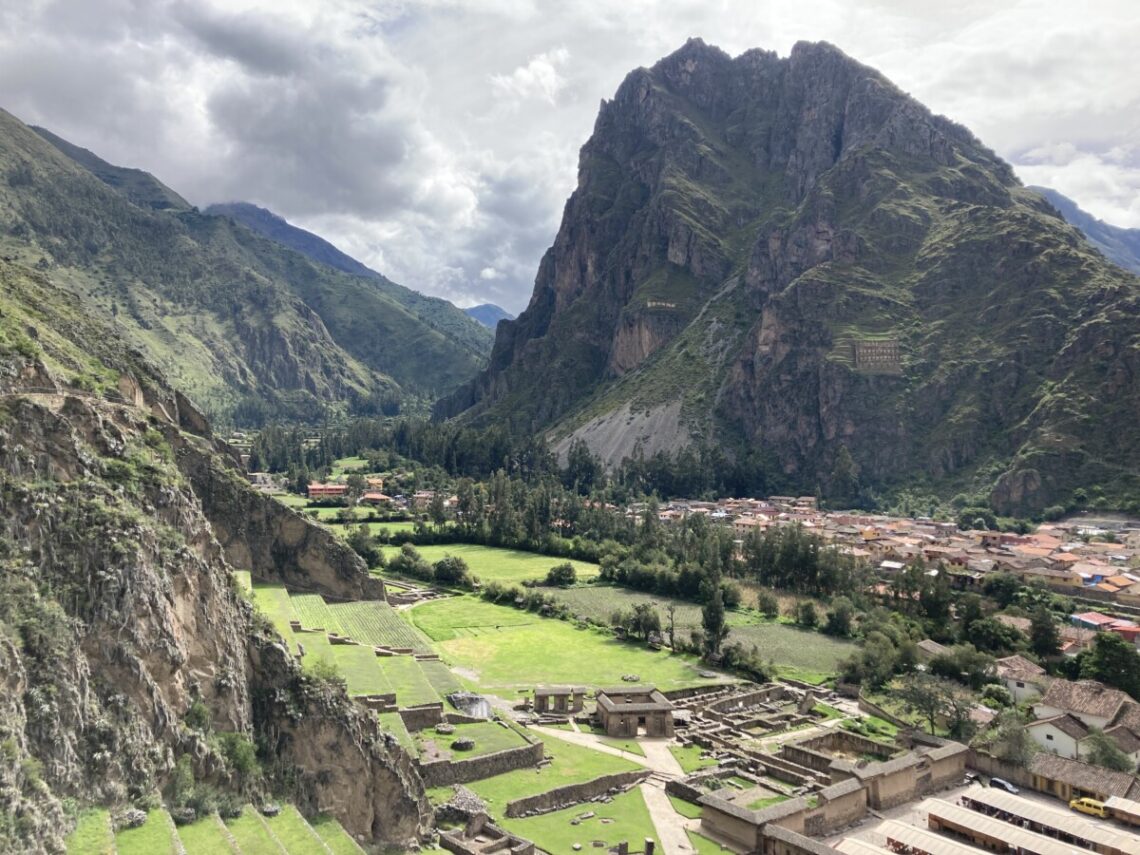
Sacred Valley in Peru
Sacred Valley in Peru is an area rich in history, culture, and beautiful nature. We visited Peru in 2022 and spent an extra day in the region before heading to the main destination of our trip, Machu Picchu.
Our journey to this fascinating place was arranged by a travel agency, which took care of all the details. We had a private guide who shared their knowledge, making the trip even more interesting. Having a car and a guide all to ourselves allowed us to simply relax and enjoy the scenery without worrying about logistics.
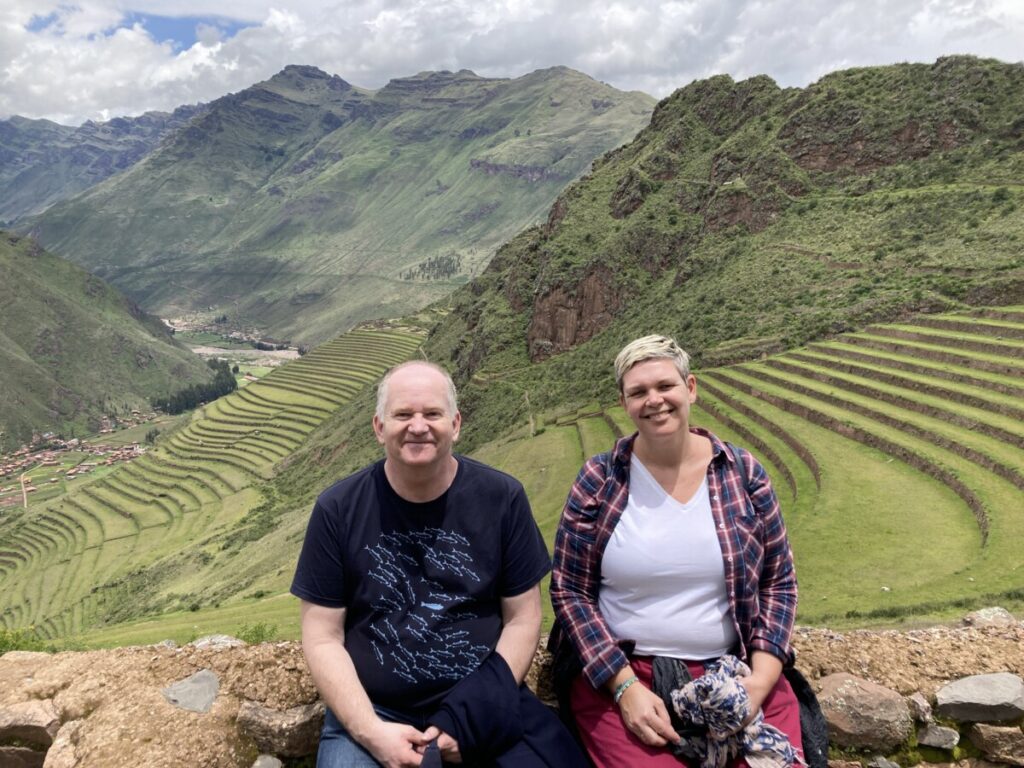
The trip began at the airport in Cusco, where we were met and driven to our hotel, about an hour and a half from Cusco. It was late and dark, so we didn’t get to appreciate the beauty of Casa Andina Premium Valle Sagrado Hotel & Villas until the next day. However, we enjoyed some food by the fireplace before retiring for the night.
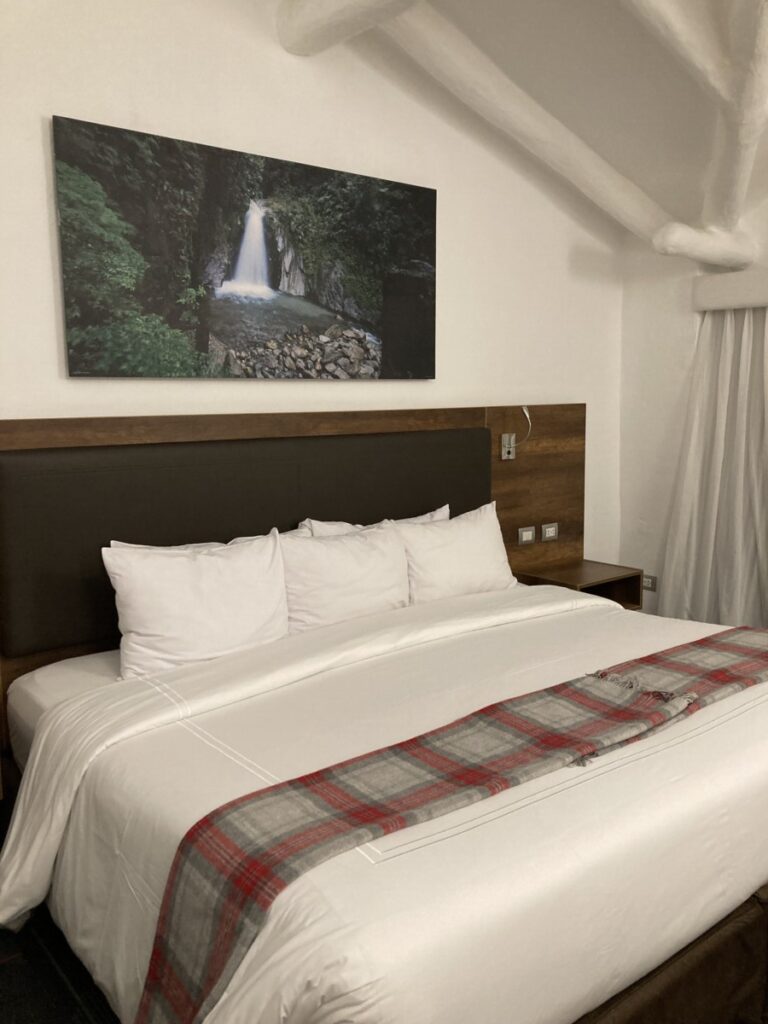
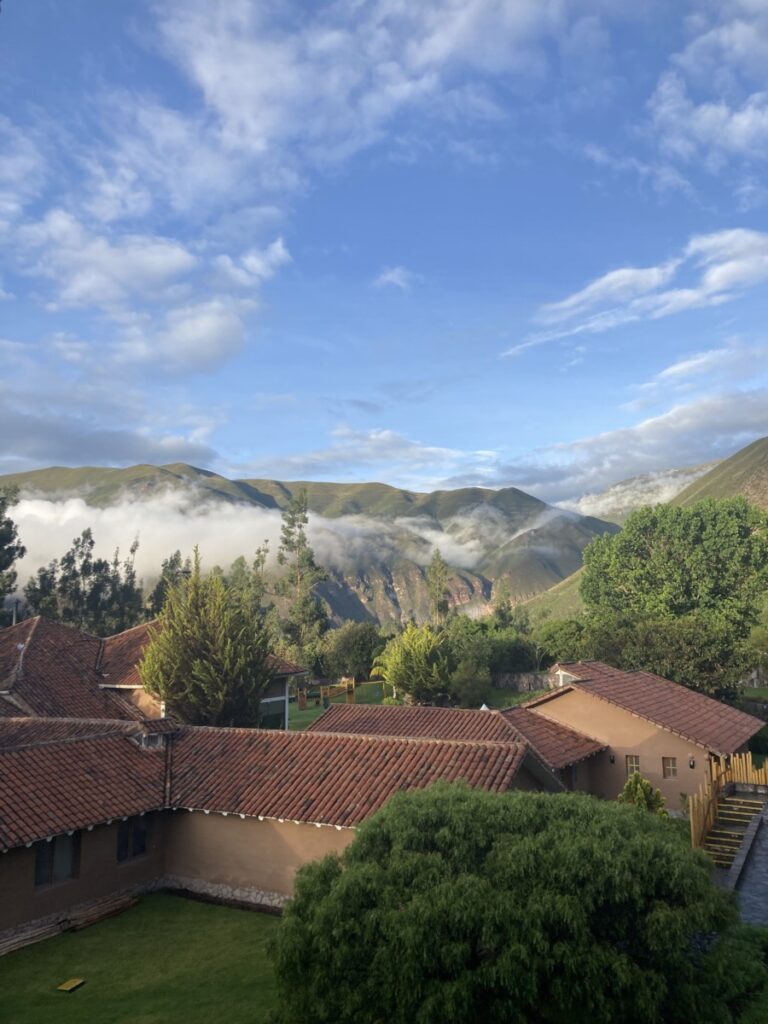
The next morning we woke up to the clouds lingering between the steep mountains, over the vas area of the hotel. The hotel is located quite “deep” into the Sacred Valley, but still a great place to start exploring the Valley.
Ollantaytambo
The next morning, we were picked up at the hotel by our private car and guide. We looked forward to a wonderful tour of Sacred Valley. Our first stop was Ollantaytambo, just 20 minutes from the hotel. The town is known for its impressive ruins. Ollantaytambo was an important religious, military, and agricultural center for the Incas. Construction began under Emperor Pachacuti in the mid-1400s, and it was used as a fortified area during the Incas’ fight against the Spanish in 1536.
Because of Covid we felt like we had the entire complex to ourselves. Quite magical to experience this without crowds of people.
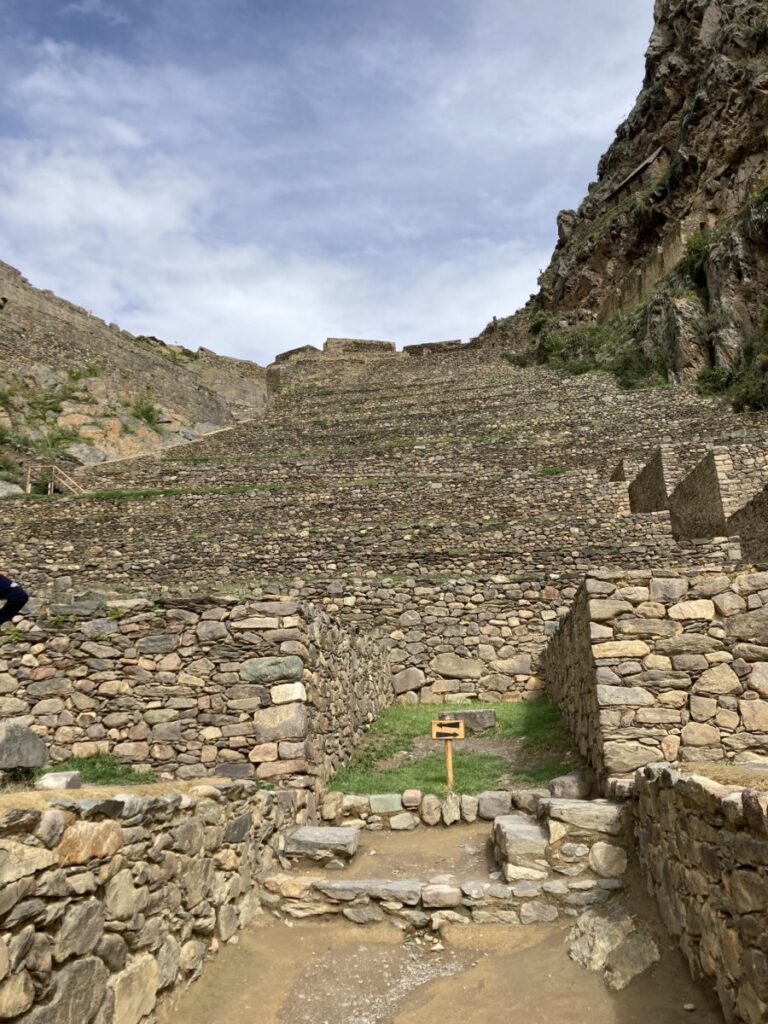

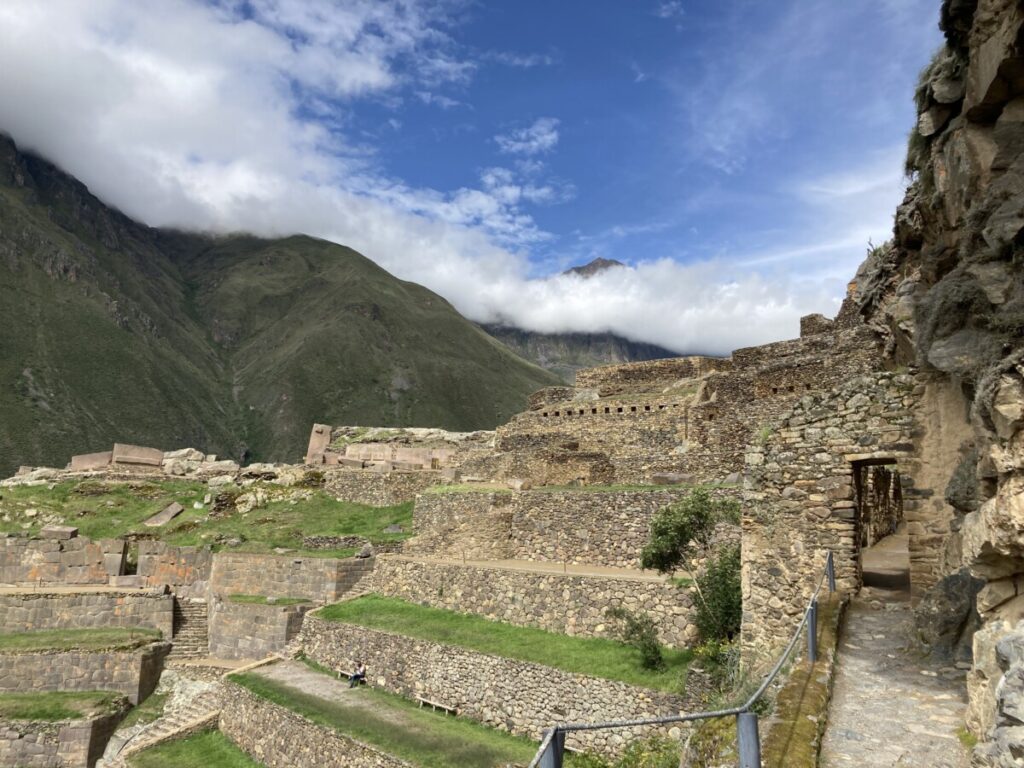
The famous Sun Temple is situated high on a terrace overlooking the Urubamba Valley. It is one of the most iconic sites in Ollantaytambo, known for its large, precisely cut stone blocks that form the walls.
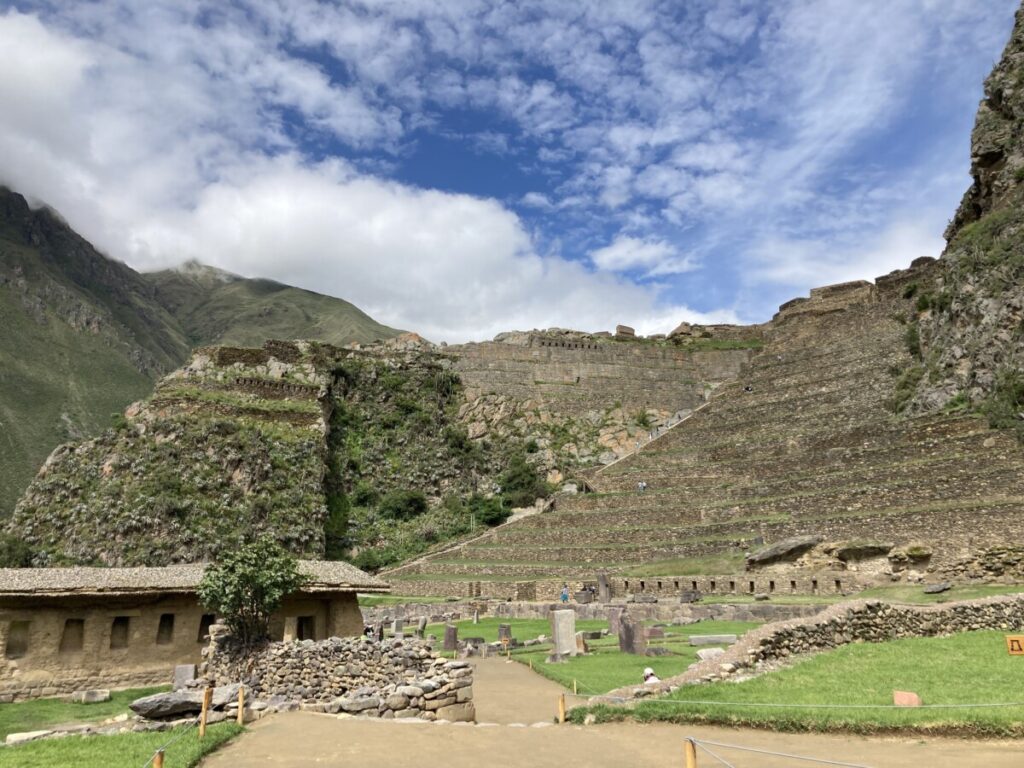
The temple is oriented so that sunlight hits specific points during solstices and other astronomical events, showcasing the Incas’ advanced knowledge of astronomy and architecture.
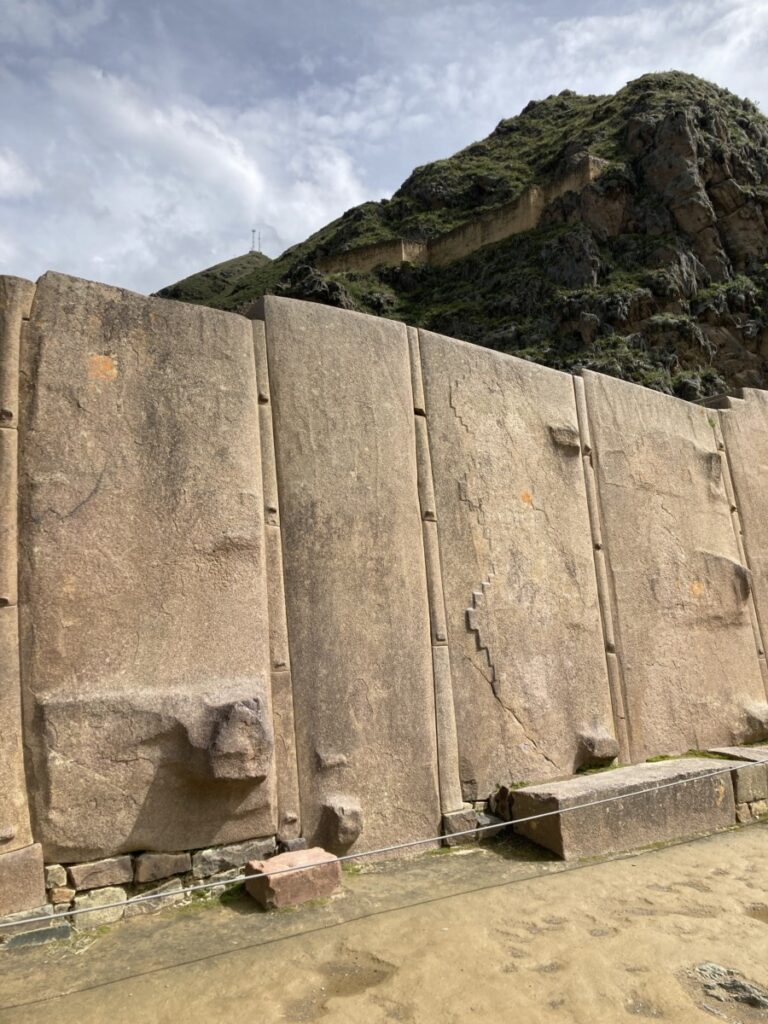
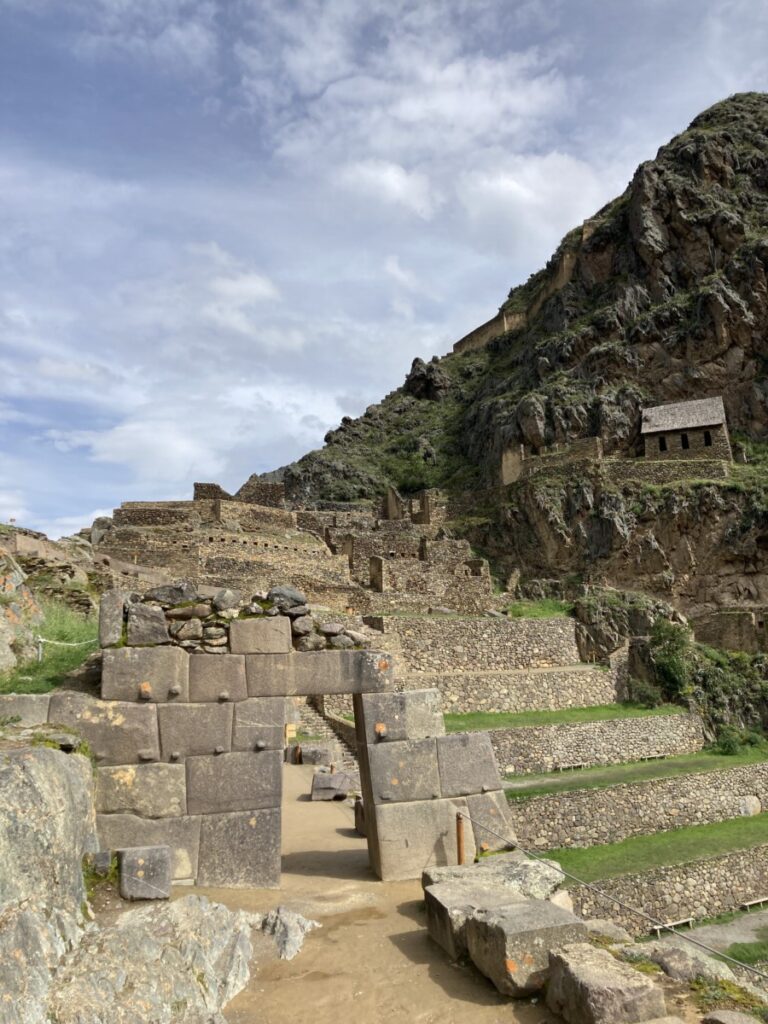
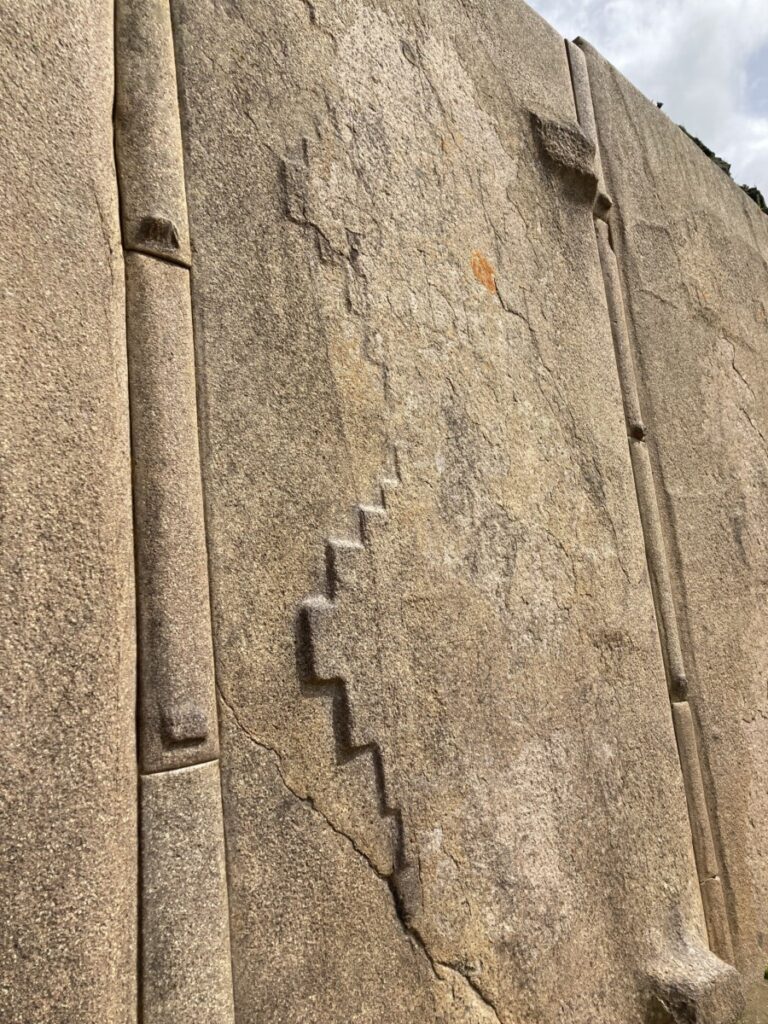
One of the most striking features of the Sun Temple is the six large stone blocks that make up the unfinished wall. These blocks, known as “The Six Virgins,” are carved from red granite quarried from across the river, several kilometers away. Each block weighs up to 50 tons and is cut with such precision that they fit perfectly together without the use of mortar.
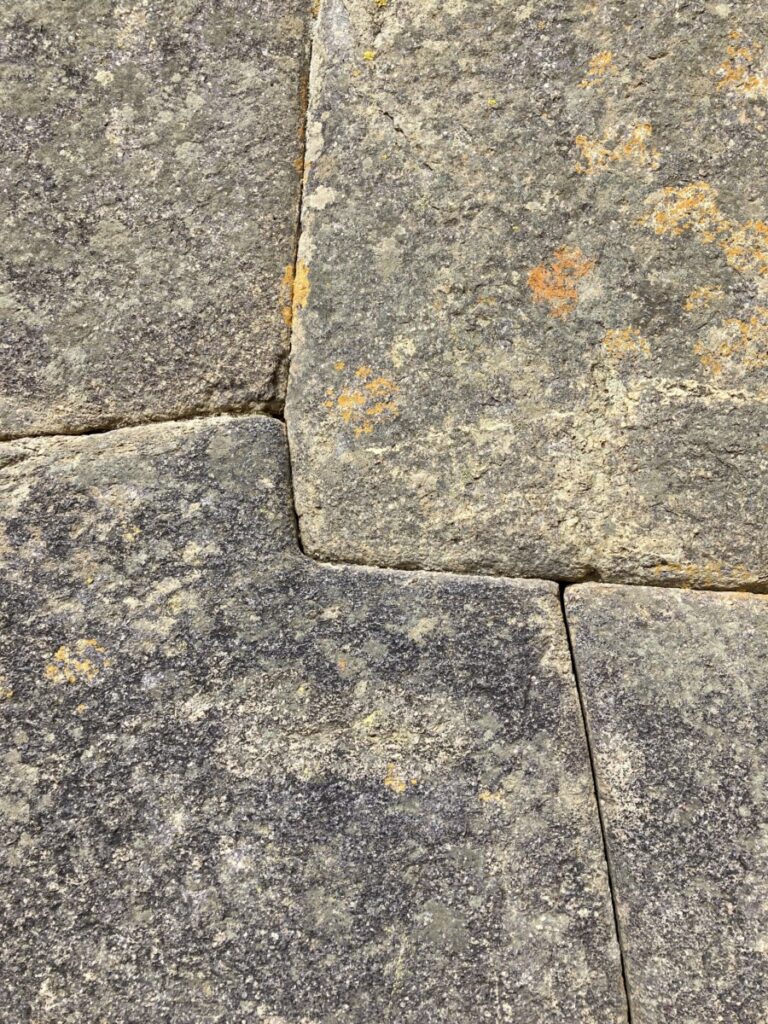
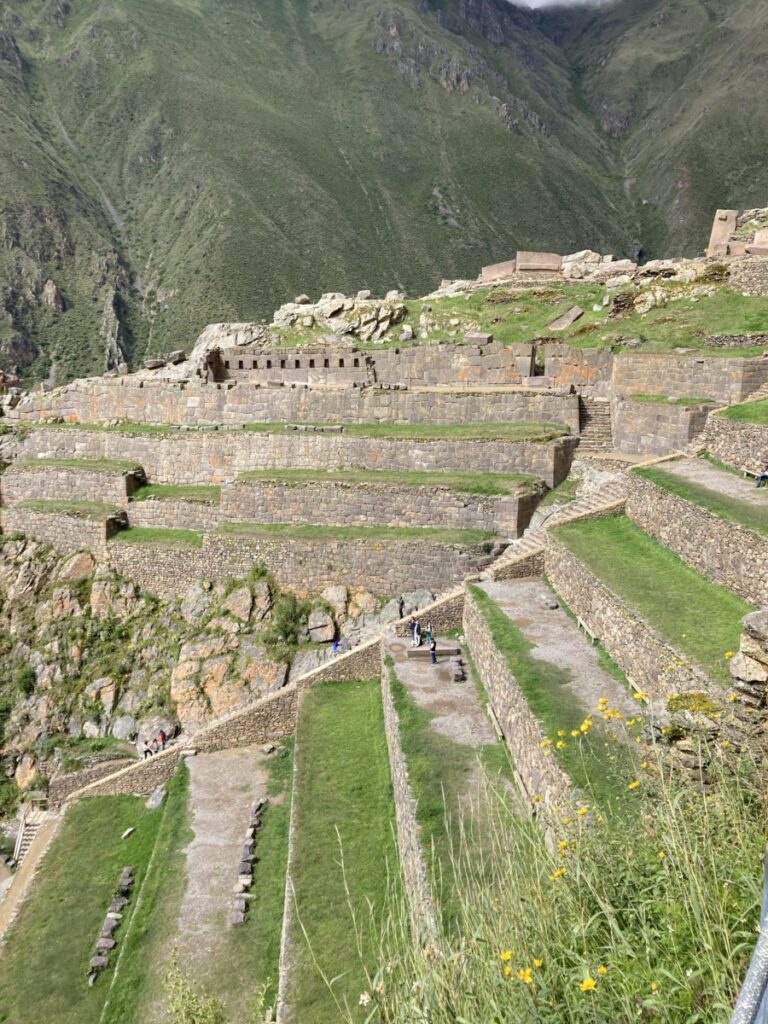
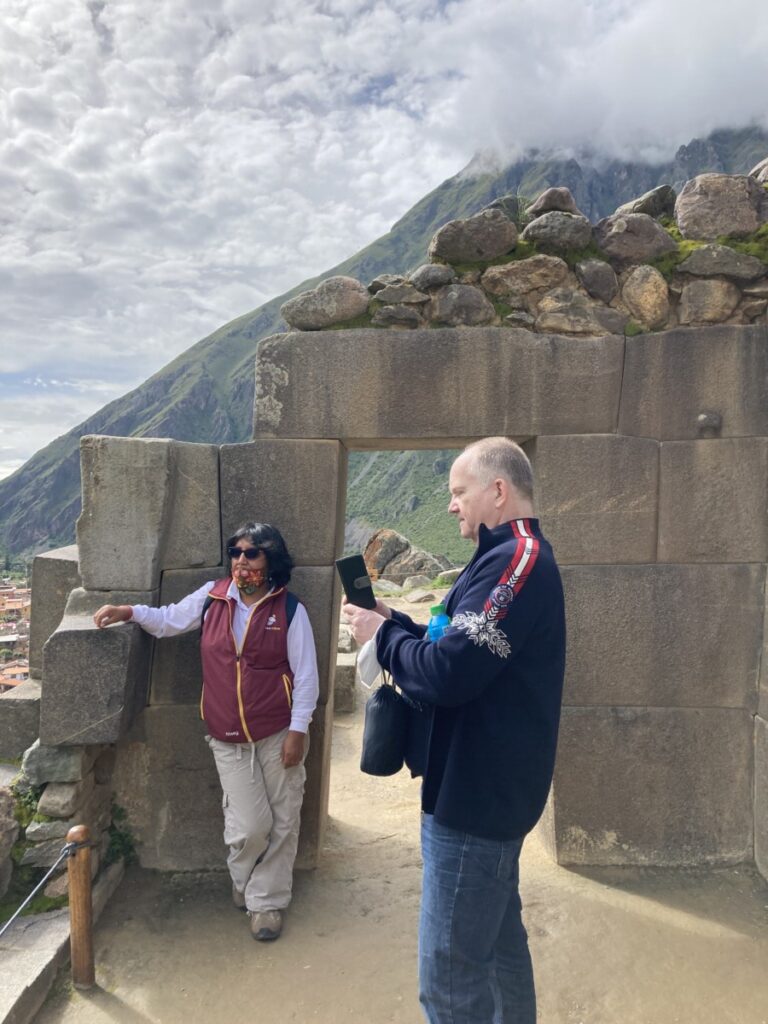
It remains a mystery how the Incas managed to transport and place these enormous stone blocks with the technology available to them. Some theories suggest the use of ramps, ropes, and large workforces, but much about their construction techniques is still unknown.
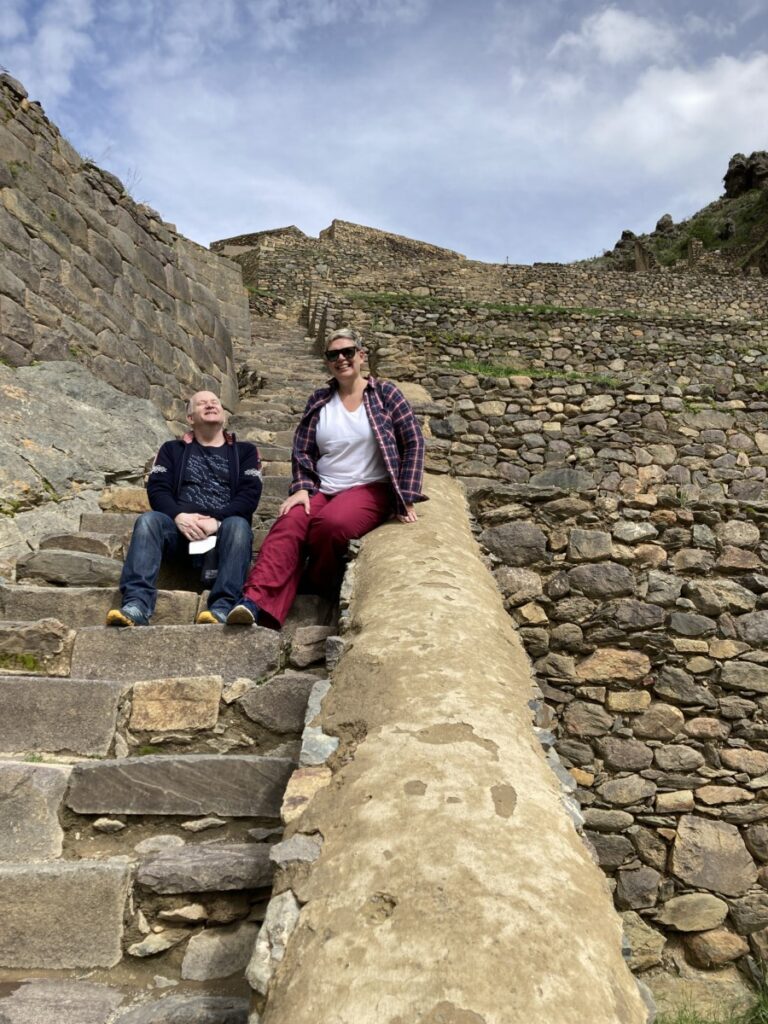
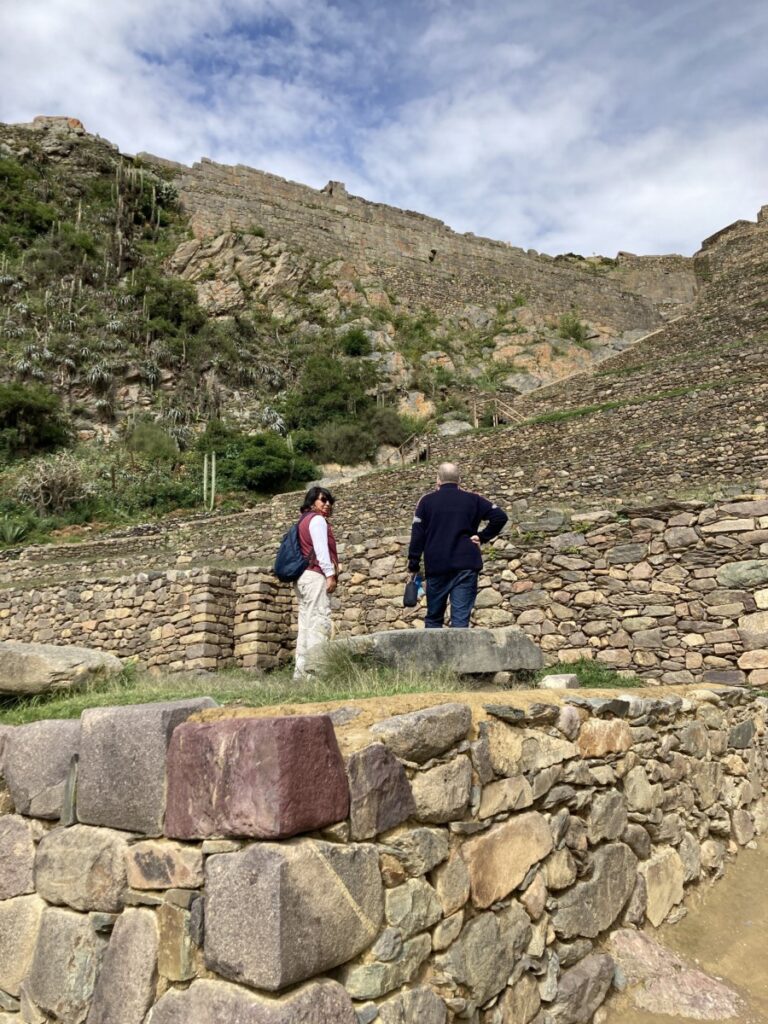
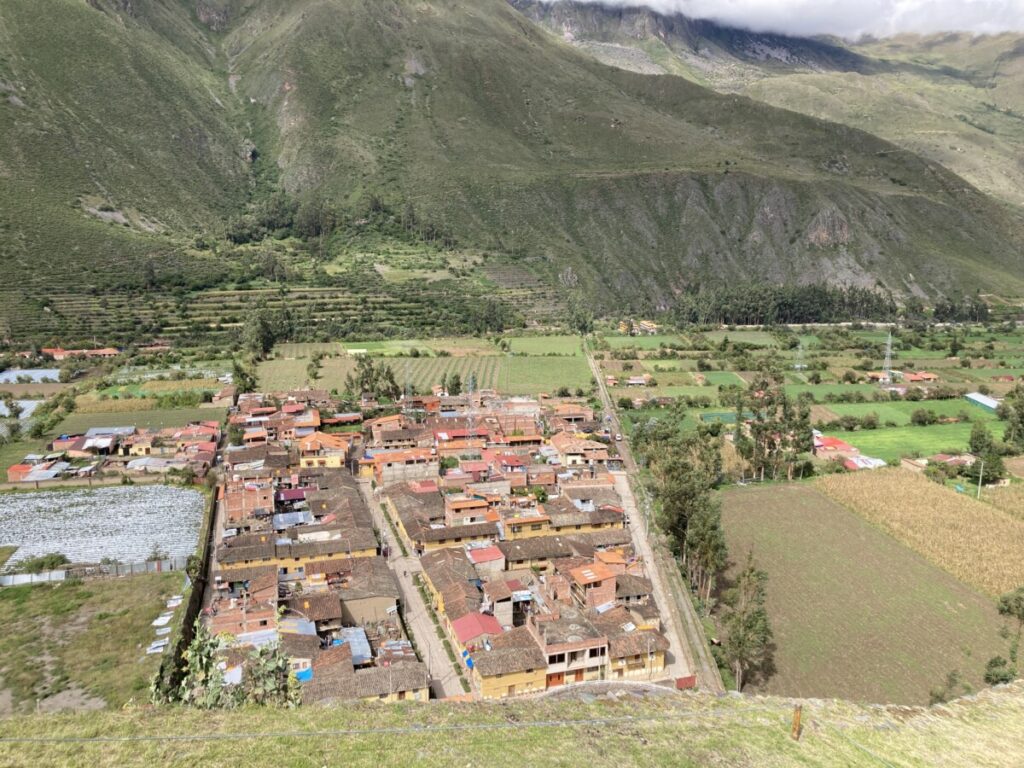
We climbed the ruins in awe before we wandered through the narrow streets of the town. Here, irrigation channels direct water away from the streets, a system that has been in place since the Incas built the site. Note the different kind of stone work. Some of the larger stone slabs are inca-stones.
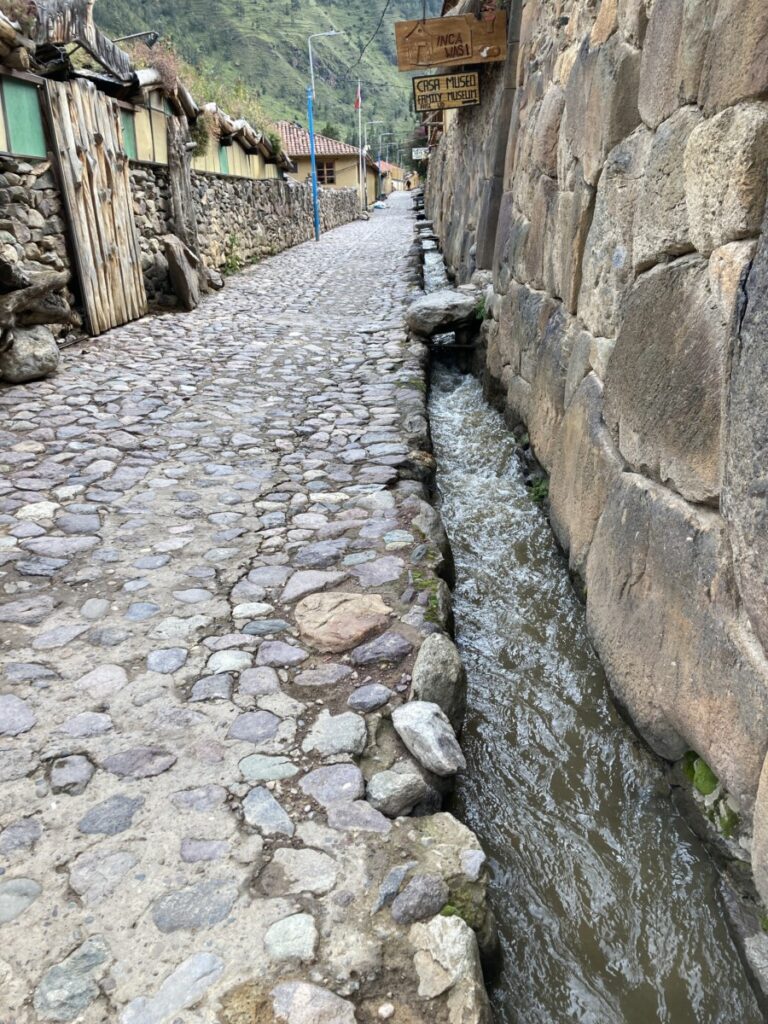
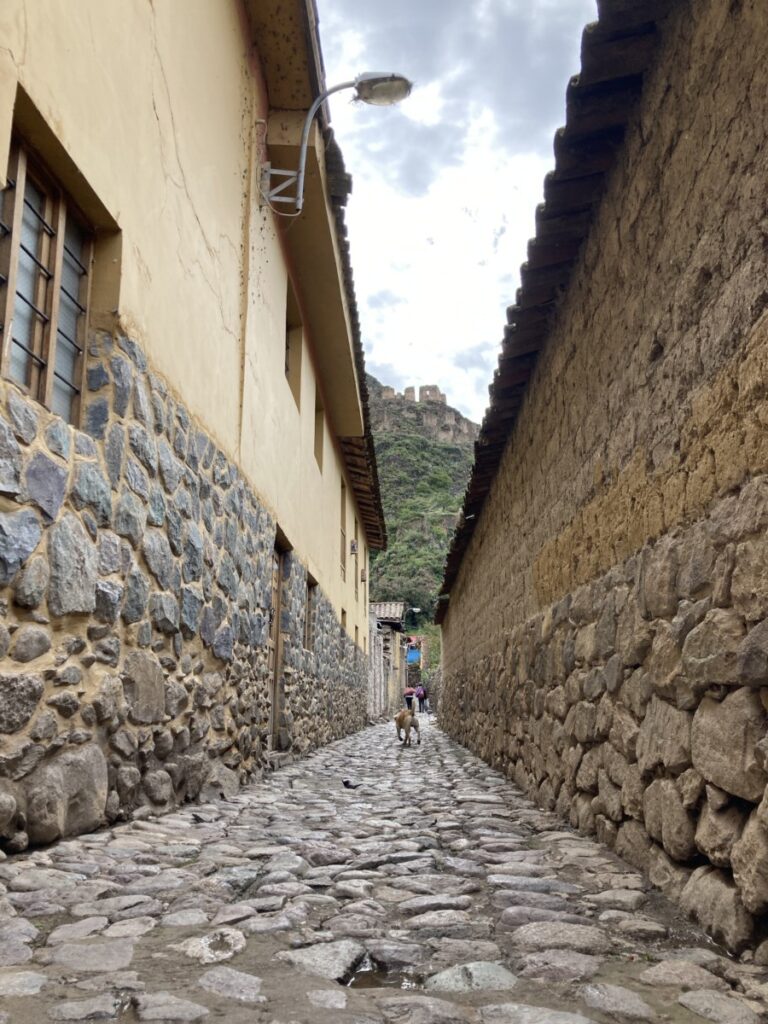
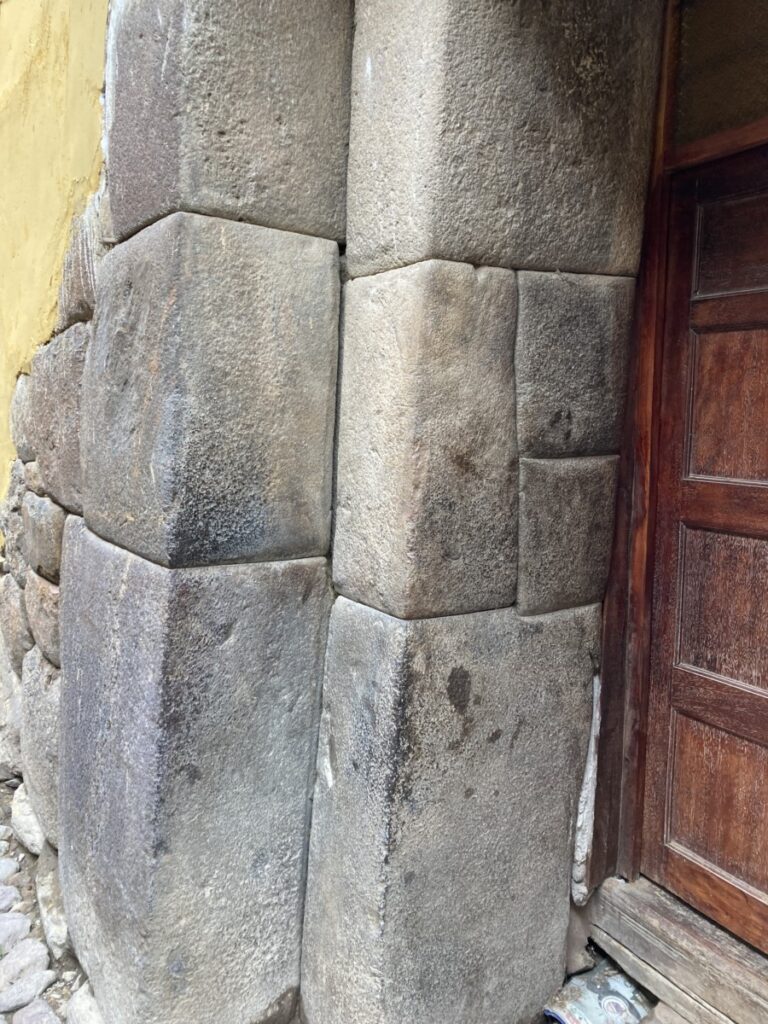
Along the way, we saw groups of people preparing to start the Inca Trail. This is where those hiking to Machu Picchu begin their journey, which can take from 2 to 4 days, depending on which of the 3 Inca trails you chose. This is also where you can catch the train to Aguas Calientes, by the foot of Machu Picchu if you do not want to hike all the way. That’s what we did.
Pisac
Our next stop was Pisac, known for its terraced fields and ruins high above the valley. Pisac was an important agricultural area for the Incas, and the ruins demonstrate their advanced irrigation techniques for cultivating crops like corn and potatoes. Construction of Pisac also began under Pachacuti, and the site served as an important administrative center for the Incas.
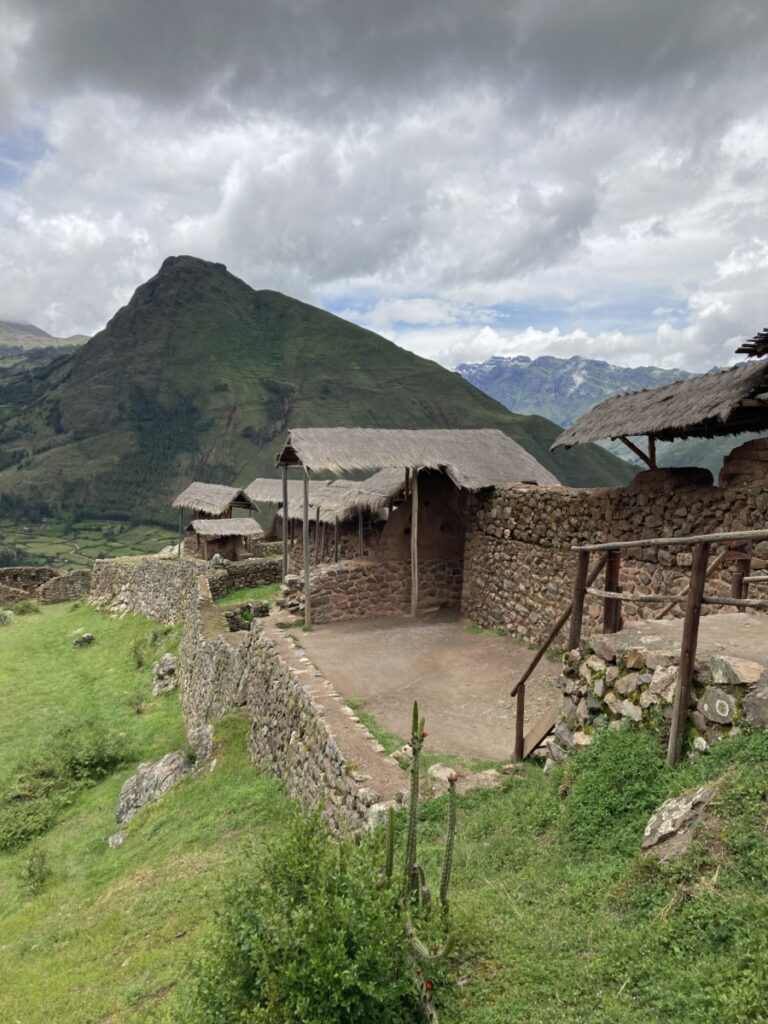
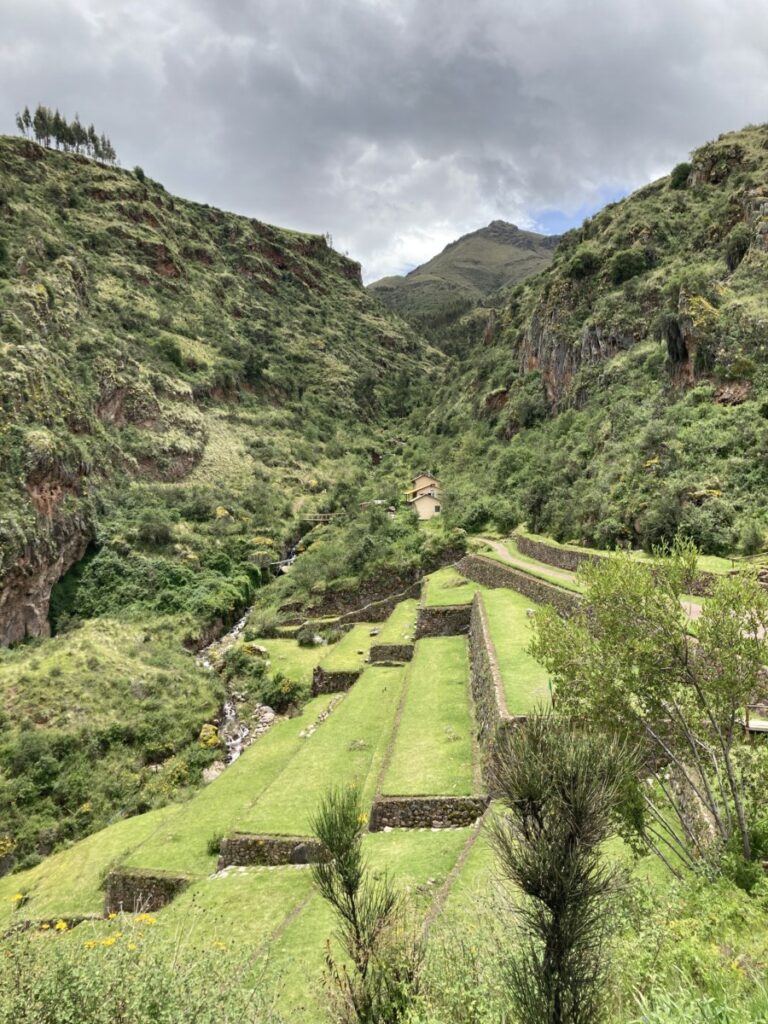

On our way to lunch, our guide asked if we wanted to try guinea pig, a national dish in Peru. We stopped at a local restaurant by the side of the road where we sampled traditional cuy (guinea pig) and Inca Cola, which neither looks nor tastes like cola. This wasn’t our main lunch, so by the time we reached the cozy restaurant where we were to dine, we weren’t very hungry. It was a bit of a shame, as the food there was also delicious.

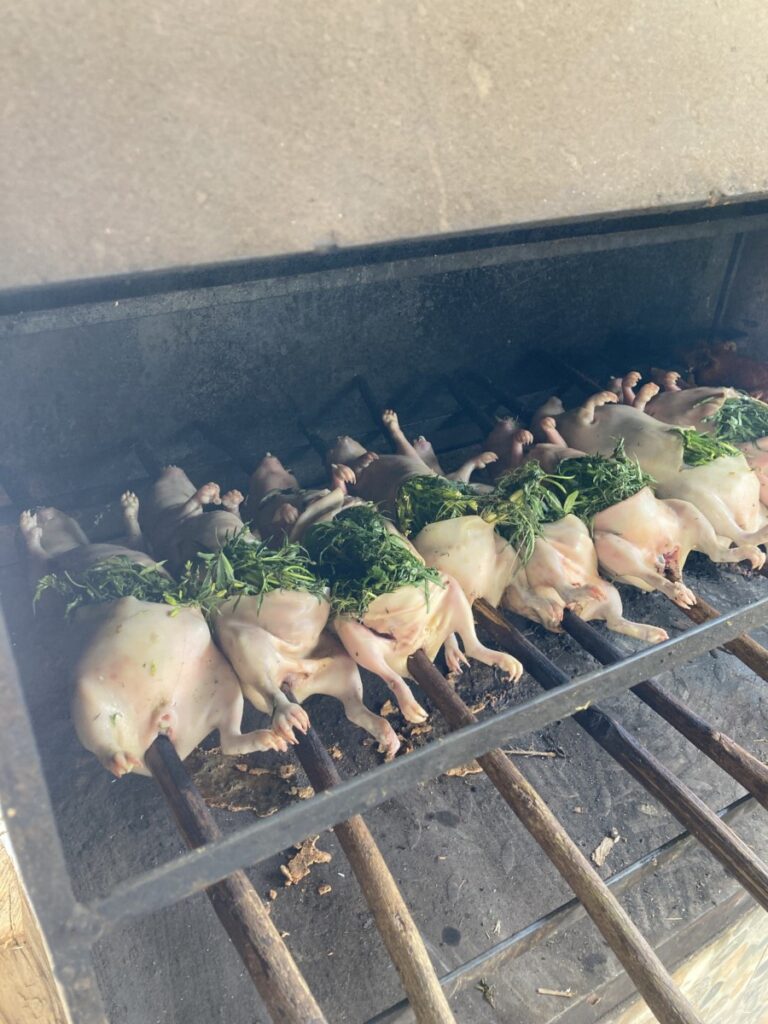
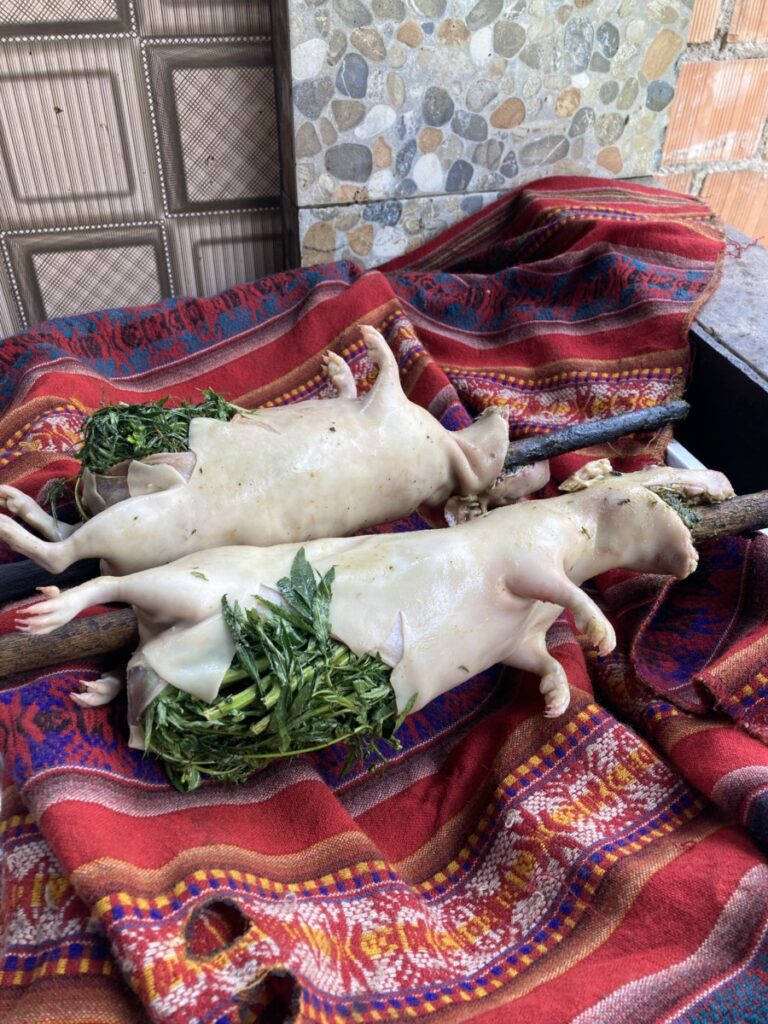
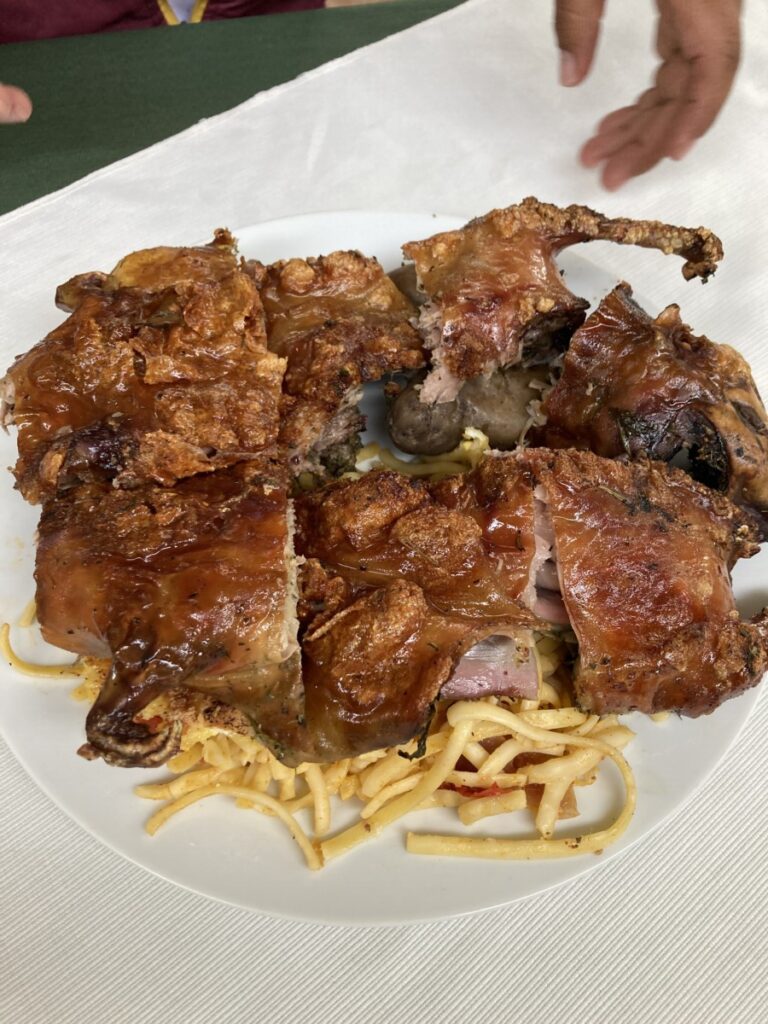
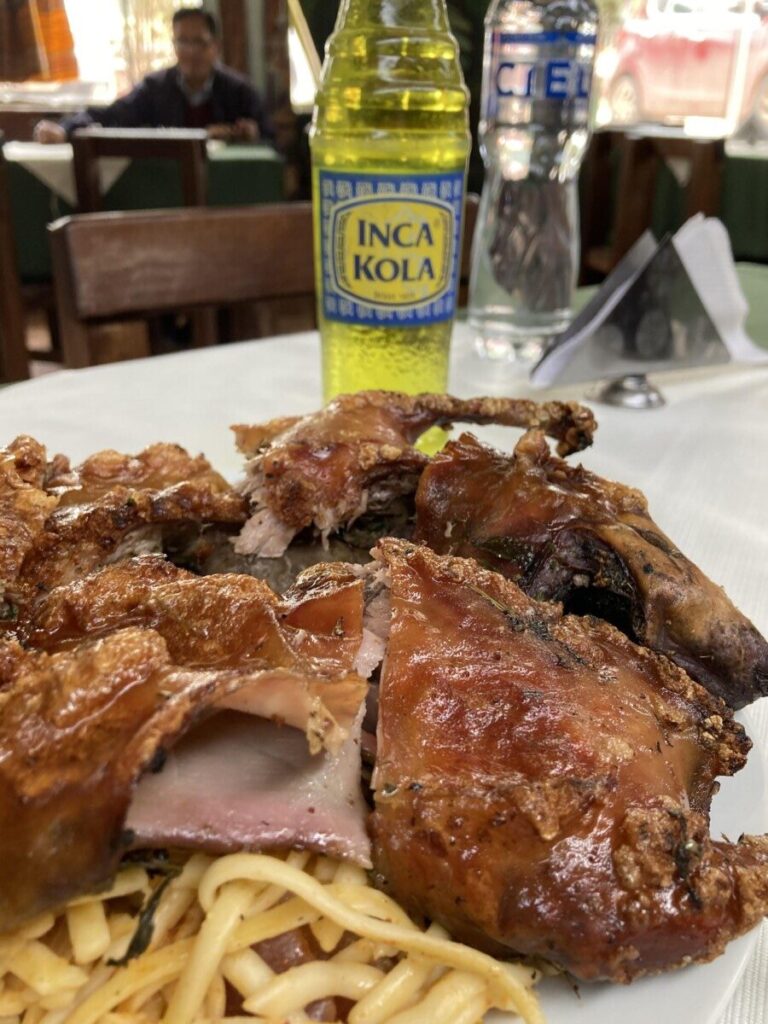
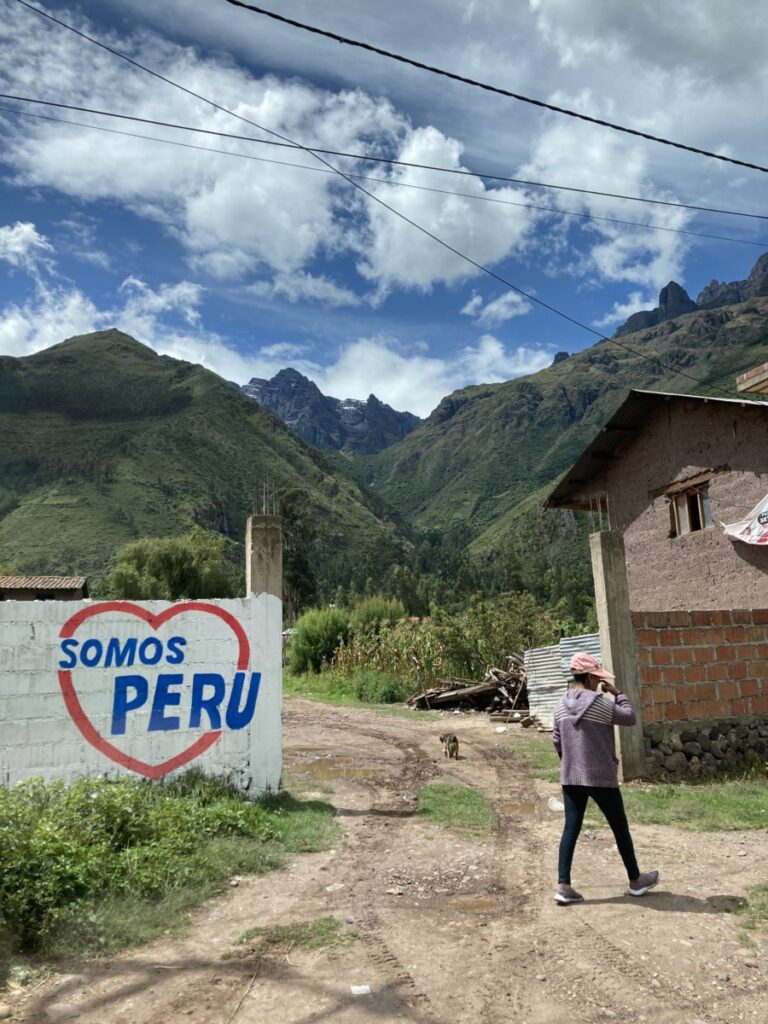
Vibrant Craftsmanship
After lunch, we headed up to the village of Chinchero, known for its traditional textiles and techniques for dyeing and weaving wool. Along the way, many women sold knitted goods and showcased colorful llamas and traditional costumes. And yes, llamas do spit! I got covered in green grass after getting too close with my camera.
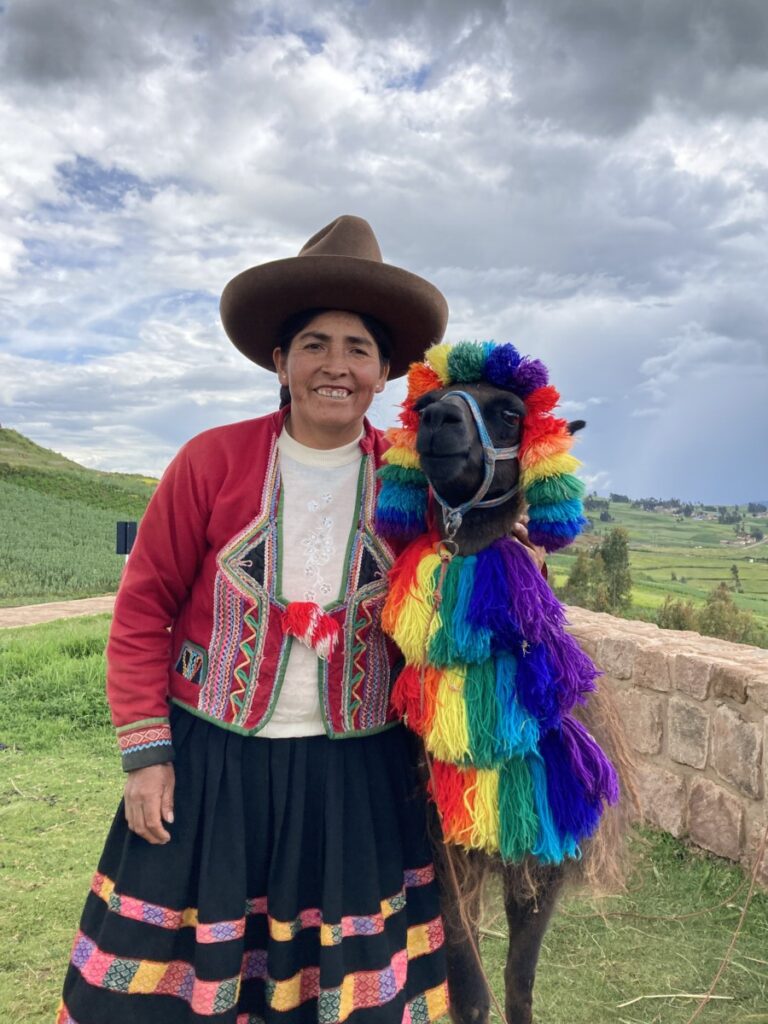
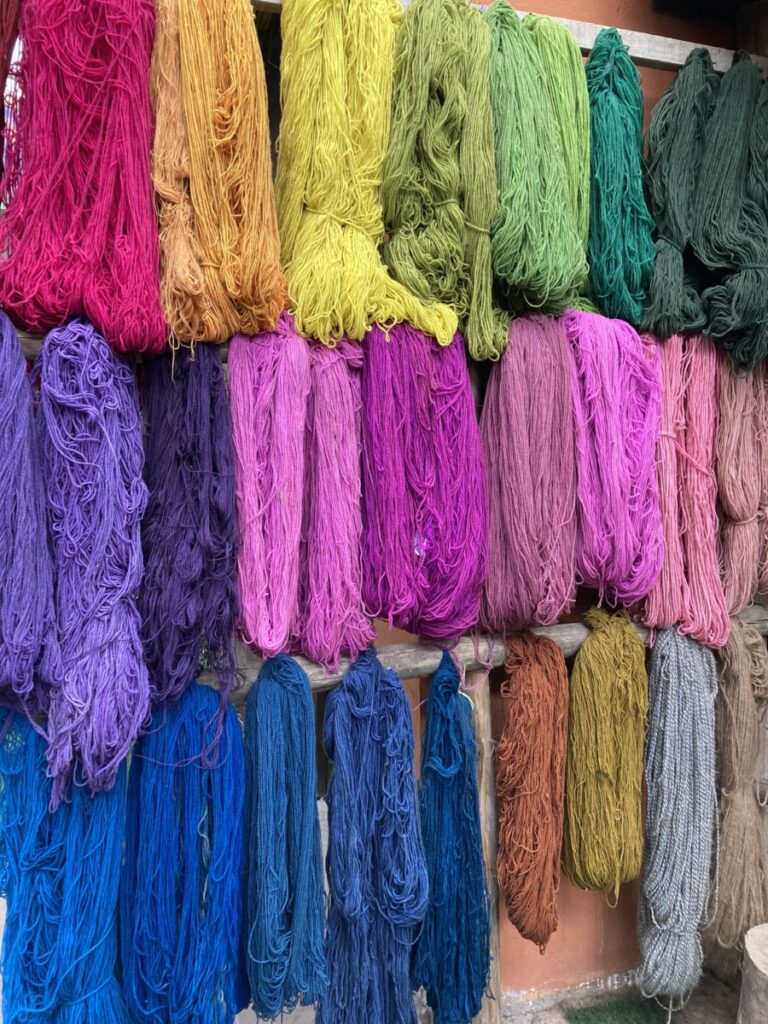
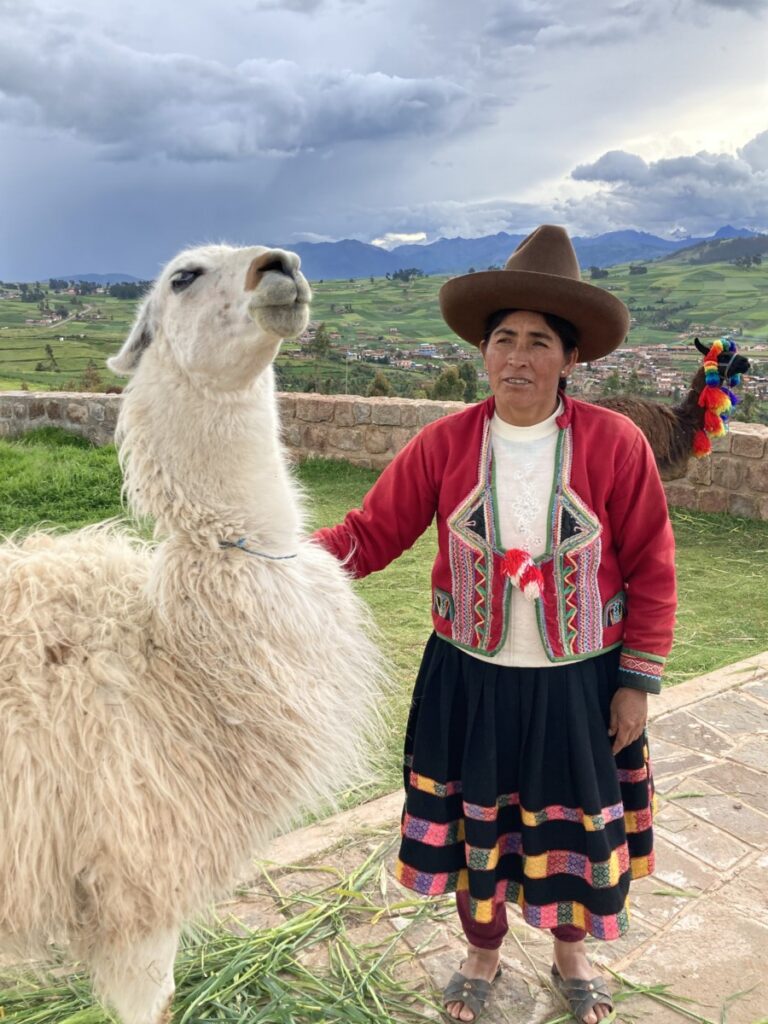
At the PARWA Center, we saw how they dyed yarn and wove their beautiful, colorful textiles. Fascinated by both the colors and the craftsmanship, we ended up buying socks, a sweater, and a tablecloth for a friend. These handwoven textiles tell the story of the region’s cultural heritage and are emblematic of South America.
On the photos below you can see some of the things they use to die the wool. Crushed stone mixed with lime juice give the vibrant red color in her hand. It’s strange how even these vibrant, bright colors can be found in nature.

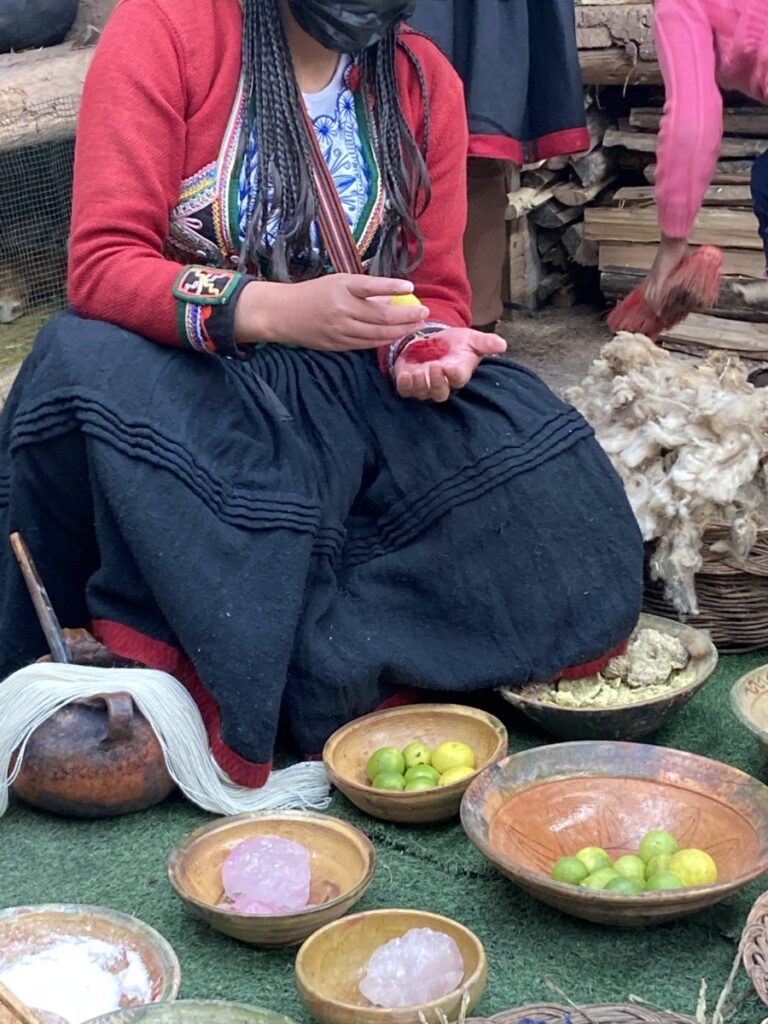
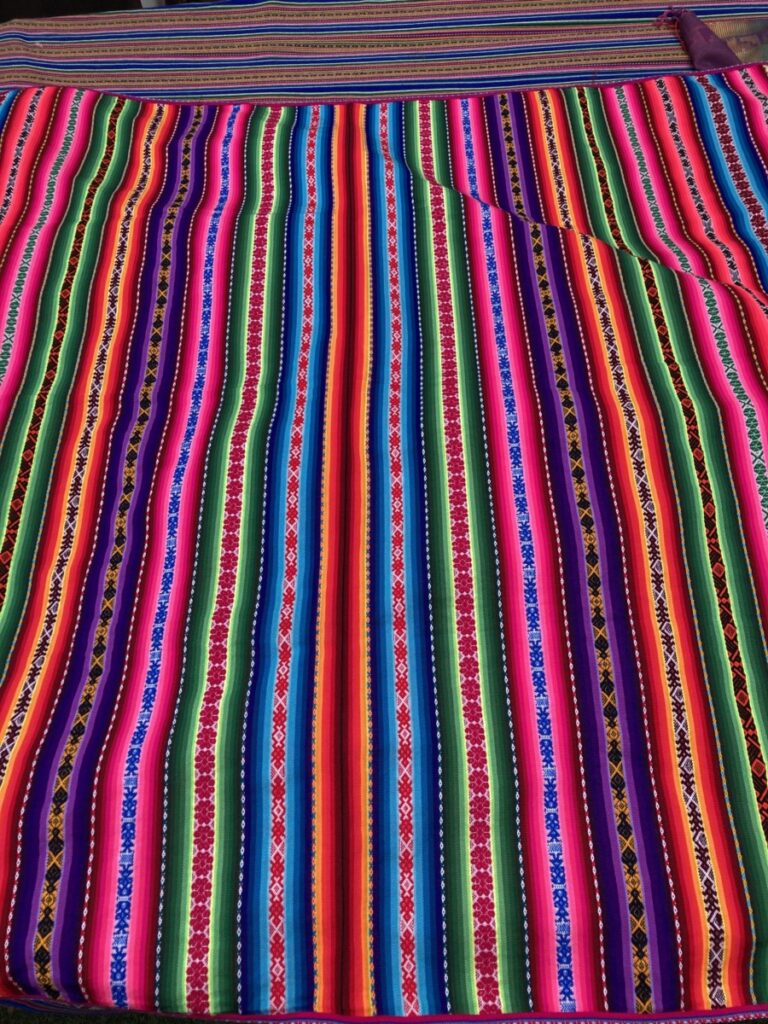
Having a private guide made our day in Sacred Valley incredibly enriching. She shared a wealth of information, and we could ask as many questions as we wanted about both the Incas and modern-day Peruvians. The Incas had an advanced civilization, and their ability to adapt to and shape the landscape around them is impressive. Our private guide made the trip both educational and engaging, and I highly recommend investing in a guide for such excursions. It’s truly worth the money and saves a lot of hassle with logistics, especially considering the large distances in Sacred Valley.
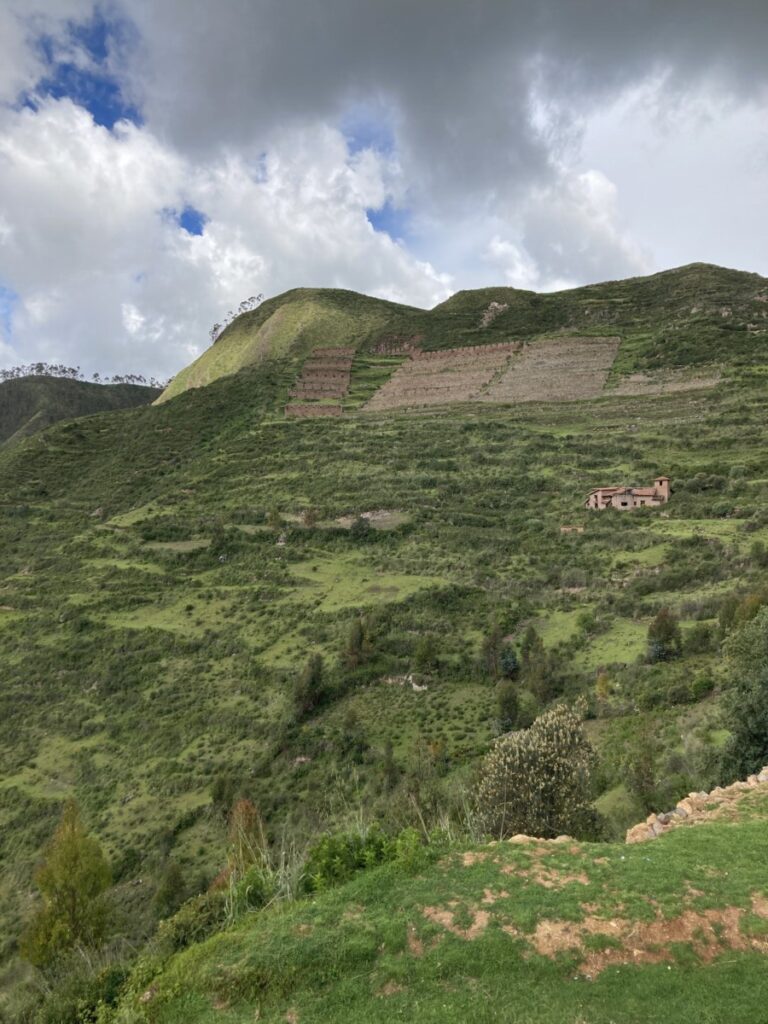
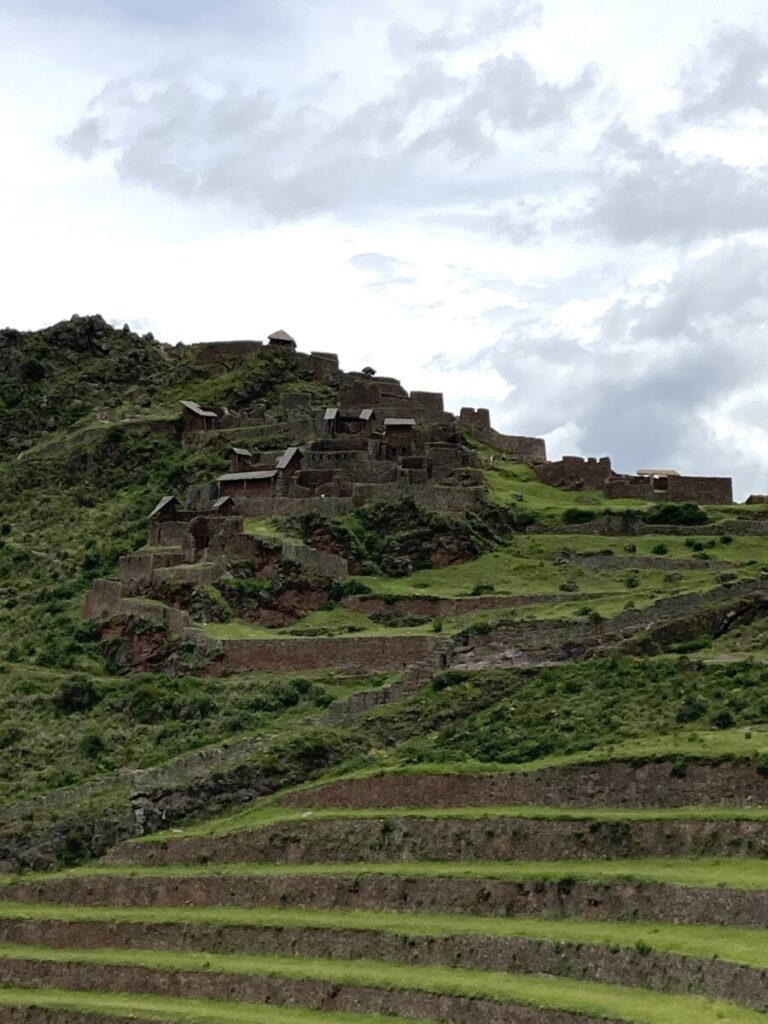
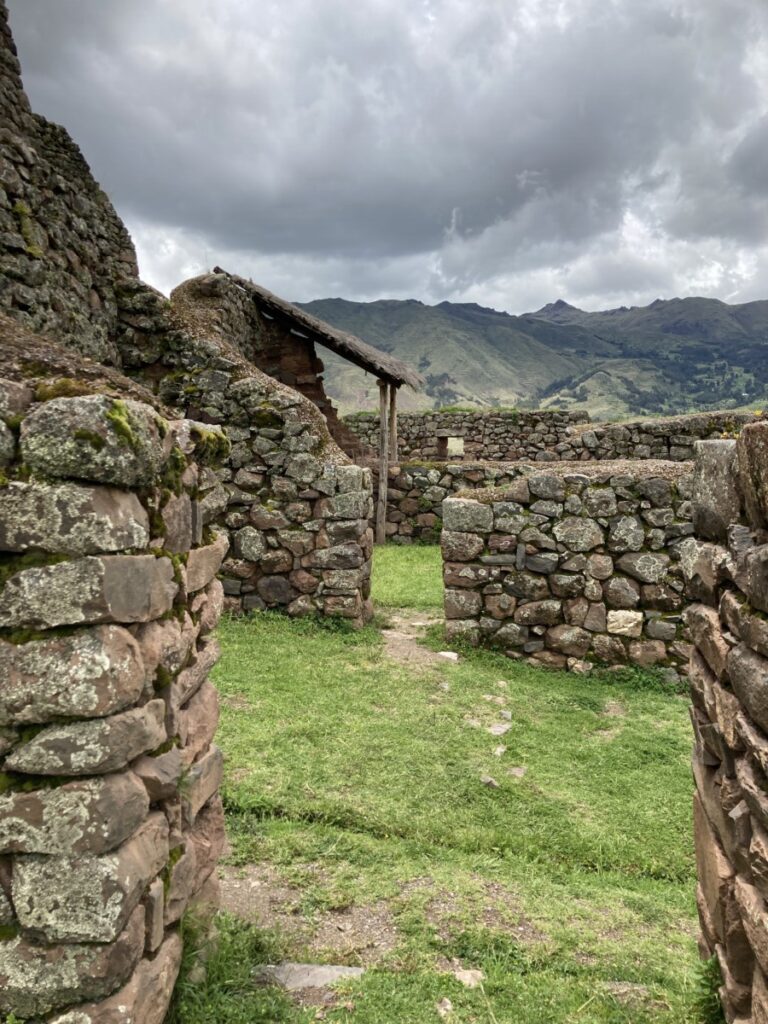
By the time we returned to our hotel, we had gained many new impressions and insights into Sacred Valley and the impressive legacy of the Incas. We were ready for the next stage of our journey and the highlight of our trip: Machu Picchu itself.
Please follow me on Instagram and Facebook to be updated on new articles and more travels. Catrines.reiser på IG og Catrines reiser på FB.
